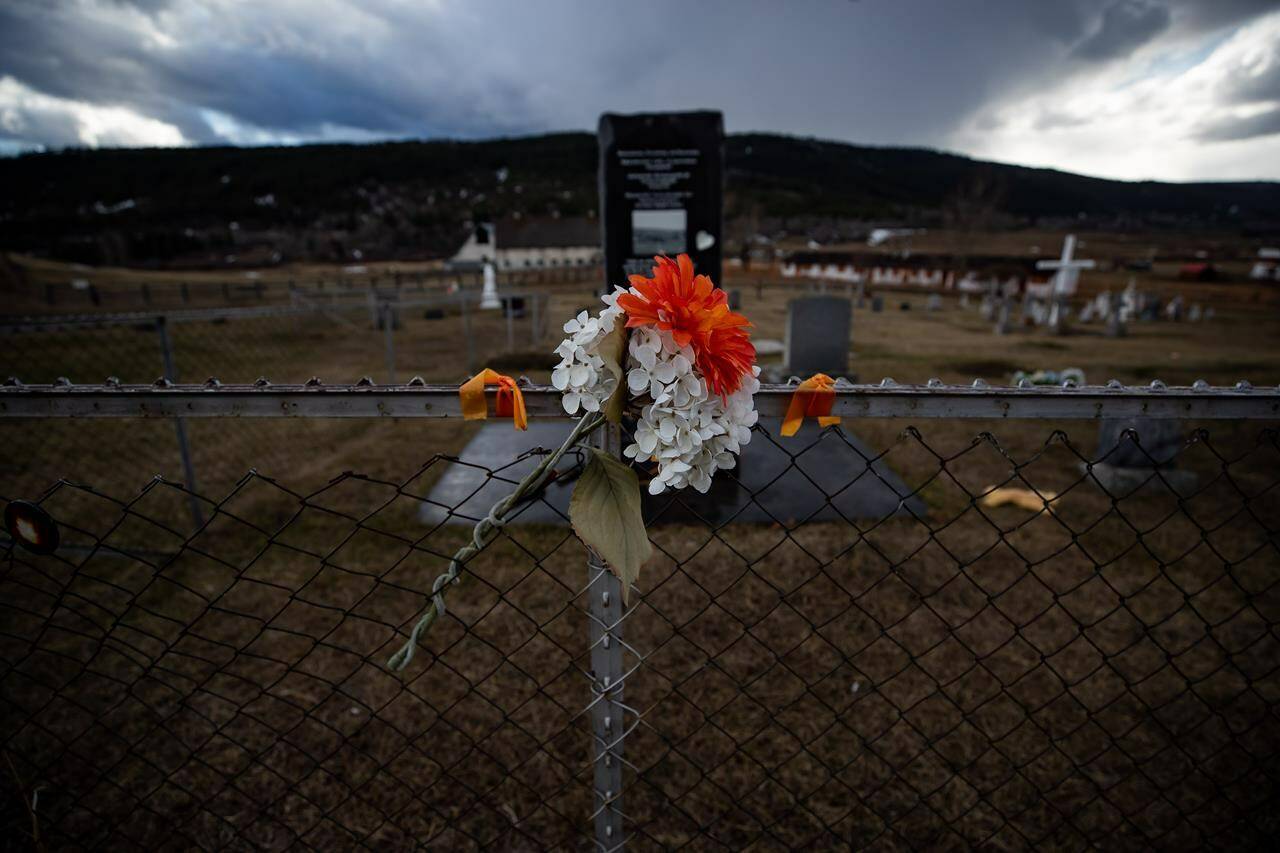The Williams Lake First Nation is preparing for the potential excavation of the site of a former residential school where it believes human remains may be located and has signed an agreement with the province and RCMP to help guide the sensitive process.
The Ministry of Indigenous Relations said Monday that the memorandum of understanding was the first of its kind in B.C. and sets out the process used for potential recovery, identification and repatriation of remains linked to the St. Joseph’s Mission Residential School.
Chief Willie Sellars of Williams Lake First Nation said it had not been decided that a dig would take place, but the agreement needed to be put in place in case the work moved forward.
Signing the memorandum was an “emotional and exciting day” after years of conversations with elders and survivors.
“I feel accomplished that progress is being made,” said Sellars.
The agreement would help “get us closer to finding out that truth, righting historical wrongs, getting to a place of proper healing for not just our community but all the communities that are impacted by that school,” said Sellars in an interview on Monday.
Sellars said the memorandum ensures the Williams Lake First Nation would continue to lead the process.
He said in a news release from the ministry that the agreement “provides the clarity we need in relation to future investigative activities and ensures the careful, culturally sensitive and respectful treatment of any human remains that might be recovered.”
The government release originally said the First Nation had begun “planning targeted excavations,” but the ministry later corrected it to say that the First Nation had no plans to excavate at present.
The ministry said the First Nation has been investigating the deaths and disappearances of Indigenous children who attended the school that operated until 1981, including through the use of ground-penetrating radar, archival research and survivor interviews.
It said the research has determined Indigenous children died “and are likely interred” on or near sites associated with the school.
The Williams Lake First Nation announced in January 2022 that it had preliminary findings of 93 potential burial sites of potential human remains around the former residential school. It was announced last year that another 66 potential sites had been detected.
The ministry said the memorandum “commits to building a shared understanding of the roles of the parties, as they work together to develop and implement the necessary processes and protocols that will likely be used in the potential recovery of remains.”
Signatories are the Williams Lake First Nation, the British Columbia Coroners Service, the Ministry of Indigenous Relations and Reconciliation, RCMP, the Ministry of Public Safety and Solicitor General and the archeology branch of Ministry of Forests.
The government said a team made up of senior leadership from each of the signatories would act in an advisory capacity.
Murray Rankin, the minister of Indigenous relations and reconciliation, said the agreement is “a very important step to have a First Nation led process to document the history of individual and multi-generational harms caused by the residential school system.”
“It is a step on the path toward truth, healing and justice,” he added in the release. “This MOU reflects a collaborative approach, so that together with Williams Lake First Nation, we can seek truth and justice for the generations of families affected by St. Joseph’s Mission Residential School.”
Sellars said he felt optimistic but more needed to be done.
“Our team has continued to have conversations about how we’re going to continue to investigate that site, what are the steps moving forward into the future … and it has come with mixed reviews from neighbouring communities and survivors in our own membership and council about what the next steps are going to be,” said Sellars.
The province says children from more than 40 communities were taken to St. Joseph’s Mission.
In the 1980s and 1990s there were three high-profile criminal convictions for physical and sexual assault that took place at the school.
The investigation at St. Joseph’s, about 500 kilometres northwest of Vancouver, was launched after ground-penetrating radar located what are believed to be more than 200 graves at a former residential school in Kamloops in May 2021, prompting similar searches and findings at former institutions in several other provinces.
The final report of the Truth and Reconciliation Commission, which documented the experiences of those affected by Canada’s residential school system, found at least 4,100 children died while attending the institutions.
Last year, the Williams Lake First Nation purchased the site of St. Joseph’s from a private owner for $1.2 million with the help of the B.C. government.
Sellars said at the time that the purchase was to ensure the integrity of the investigation and honour both the children who disappeared and those who were taken from their families to attend the school.
Looking into the future, Sellars said he hopes the site could be transformed into a place of healing to honour ancestors and survivors who attended the school.
“And that’s how we’re going to break those generational cycles. That’s how we’re going to heal our communities,” he said.
Note to readers: This is a corrected story. A previous version cited a Ministry of Indigenous Relations and Reconciliation news release that said Williams Lake First Nation had begun planning to excavate the St. Joseph’s site. The ministry later corrected this to say the First Nation has no current plans to excavate, while Chief Willie Sellars said the First Nation was preparing for a potential excavation.
READ ALSO: ‘I’m here to listen,’: Prime Minister Justin Trudeau visits Williams Lake First Nation
READ ALSO: Preliminary results from St. Joseph’s Mission Residential School investigation to be released

